The beverage landscape is filled with a variety of sugar-free options that address the needs of the health-conscious consumer. Among these, Diet Coke and Coke Zero have carved out significant niches. Both products are variants of the flagship Coca-Cola brand and are formulated to offer the classic Coke taste without the high sugar content.
Diet Coke, introduced in 1983, was the first to present the Coke experience with fewer calories. It relies on artificial sweeteners to achieve its distinct taste profile, which some consumers describe as lighter and somewhat different from the regular Coca-Cola.
On the other hand, Coke Zero, which made its debut in 2005 under the name Coke Zero Sugar, boasts a taste that’s closer to that of the original Coca-Cola.
This aspect of Coke Zero is designed to appeal to those who desire the full flavor experience without the caloric impact of standard soft drinks. Similar to its precursor, Coke Zero employs a mix of low-calorie sweeteners and presents a different blend that aims to mimic the traditional Coca-Cola flavor more closely.
From the nutrition point of view, both Diet Coke and Coke Zero are similar: they contain zero calories and sugar, using artificial sweeteners for their sweet taste. Although they serve the same purpose of offering a low-calorie alternative to traditional cola beverages, the subtle distinctions in their flavor profiles and brand positioning resonate with different consumer preferences, and perceptions in a different way.
Diet Coke and Coke Zero Product Overview
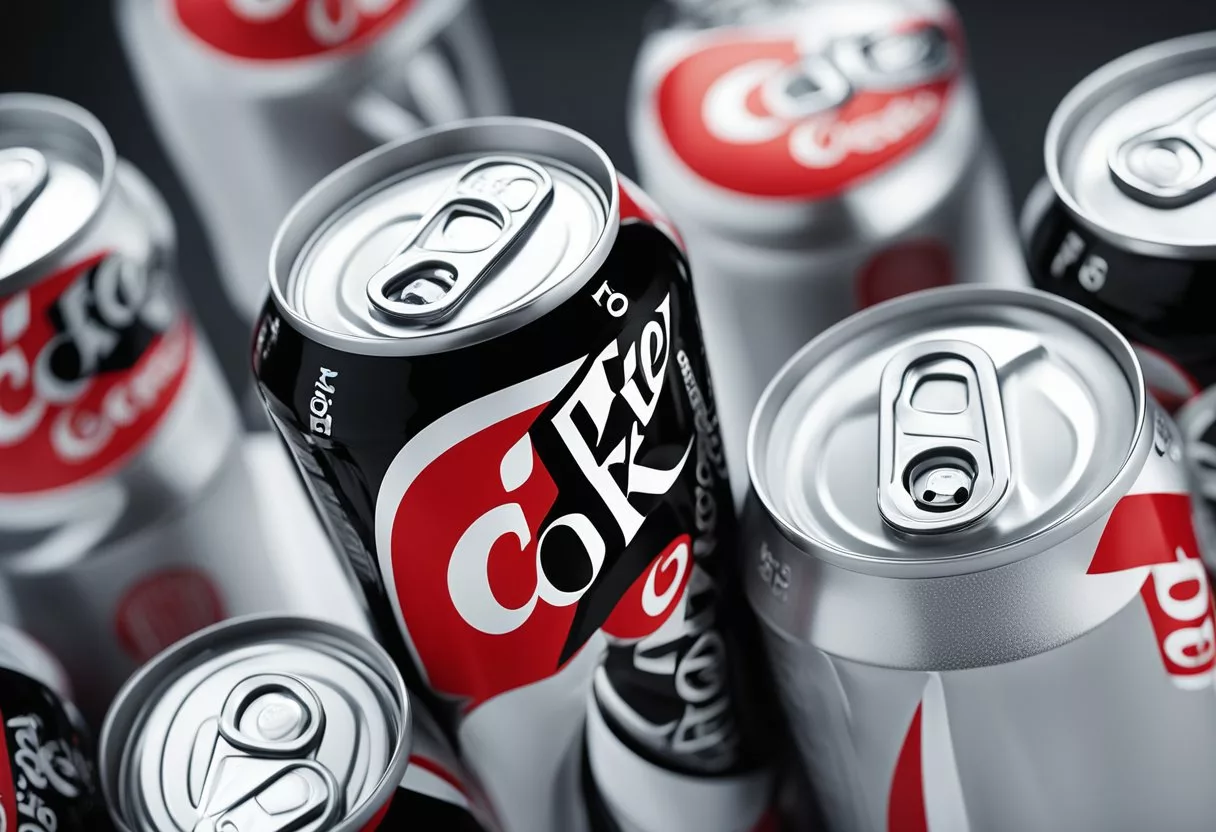
The history of Coca-Cola’s diet soda offerings and their evolving market share is both complex and fascinating. Two key products, Diet Coke and Coca-Cola Zero Sugar, formerly known as Coke Zero, provide zero-calorie alternatives to the classic Coca-Cola.
Brand History
Diet Coke, introduced in 1982, was Coca-Cola’s first major foray into the diet soft drink market, quickly becoming a cultural icon. It was notably branded under the trademark of “Diet Coke” rather than being a direct “diet” variant of Coca-Cola, signaling a distinct product.
Coca-Cola Zero, which debuted in 2005 and later rebranded to Coca-Cola Zero Sugar in 2017, represented an effort to more closely mimic the taste of the original Coca-Cola while also providing a no-calorie option. With the rebrand came a new recipe aimed at catering to consumer preferences for a taste similar to the regular version of Coca-Cola.
Current Variants
Diet Coke has expanded its original offering to include various flavors like Cherry, Lime, and Vanilla. It primarily uses aspartame and acesulfame potassium as sweeteners.
Coca-Cola Zero Sugar also comes in multiple flavors, including Cherry and Vanilla. The branding refresh and new recipe that resulted in the ‘Zero Sugar’ designation aimed to enhance the taste profile while keeping it within the zero-calorie bracket.
Target Market
- The target market for Diet Coke consists largely of individuals who grew up with the brand and have a long-standing loyalty to its unique taste profile. It is often marketed towards those looking for low-calorie alternatives due to diet or lifestyle choices.
- Coca-Cola Zero Sugar targets individuals who seek the classic taste of Coca-Cola but with fewer calories and less sugar intake. Its marketing and packaging are more aligned with the original Coca-Cola, suggesting it’s for consumers who do not want to compromise on taste while making healthier choices.
Both products capitalize on the Coca-Cola brand heritage while catering to evolving consumer preferences in the diet soft drink segment.
Diet Coke vs. Coke Zero Nutritional Comparison
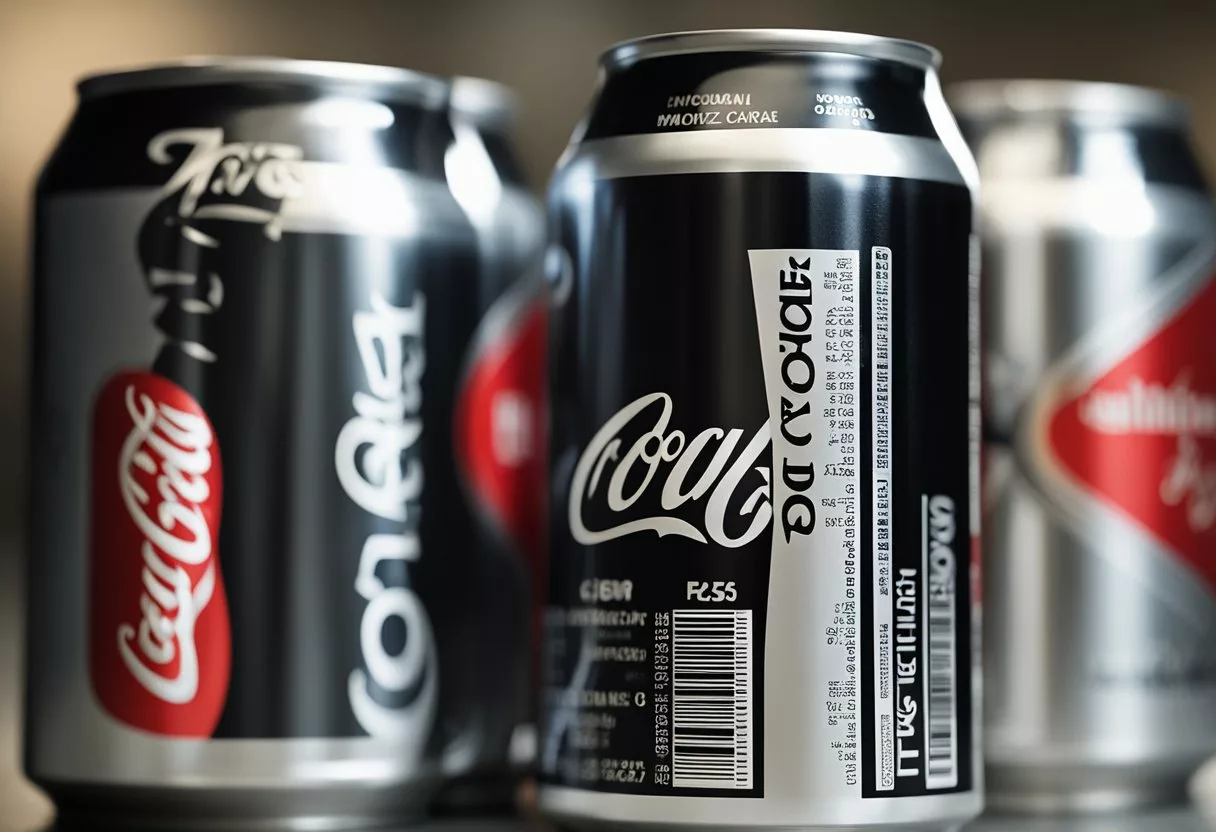
When comparing Diet Coke and Coke Zero, it is important to consider their caloric content, the sweeteners used, and other ingredients that contribute to their nutritional profiles.
Caloric Content
Both Diet Coke and Coke Zero are marketed as low-calorie alternatives to regular soda. They both contain:
- Calories: 0 kcal per serving
Sweeteners Used
The sweeteners are key components in these beverages:
Diet Coke:
- Aspartame
- Acesulfame Potassium
Coke Zero:
- Aspartame
- Acesulfame Potassium
Both products use a blend of these two artificial sweeteners to provide a sugar-free sweetness.
Other Ingredients
Apart from sweeteners, the beverages contain varying levels of other ingredients:
| Ingredient | Diet Coke | Coke Zero |
|---|---|---|
| Sodium | 40 mg per serving | 40 mg per serving |
| Protein | 0 g | 0 g |
| Total Fat | 0 g | 0 g |
| Carbohydrates | 0 g | 0 g |
Neither beverage contains fat or protein, and both are free from any total fat.
Taste Profile

When comparing Diet Coke and Coke Zero, the distinguishing factor lies in their unique taste profiles which are designed to cater to different preferences.
Flavor Composition
Coke Zero was created to mimic the flavor of the original Coca-Cola as closely as possible. It contains natural flavors and caramel color, designed to offer a rich and robust taste. The sweeteners used in Coke Zero include a mixture of aspartame and acesulfame potassium, which together provide a sweetness that many consider being closer to that of regular coke.
On the other hand, Diet Coke has a lighter and distinctive taste different from Coca-Cola Classic. Its flavor is also reliant on natural flavors and caramel color, but Diet Coke utilizes only aspartame as the sweetener. This distinct choice in sweeteners, along with a different blend of natural flavors, gives Diet Coke a different flavor profile from both Coke Zero and the traditional Coca-Cola.
Aftertaste Experience
Many consumers note that the aftertaste of Coke Zero and Diet Coke can vary quite distinctly. Coke Zero’s use of both aspartame and acesulfame potassium tends to leave a similar aftertaste to that of regular sugar, whereas Diet Coke’s sole use of aspartame is often noticed as leaving a slightly sharper aftertaste.
Health Considerations
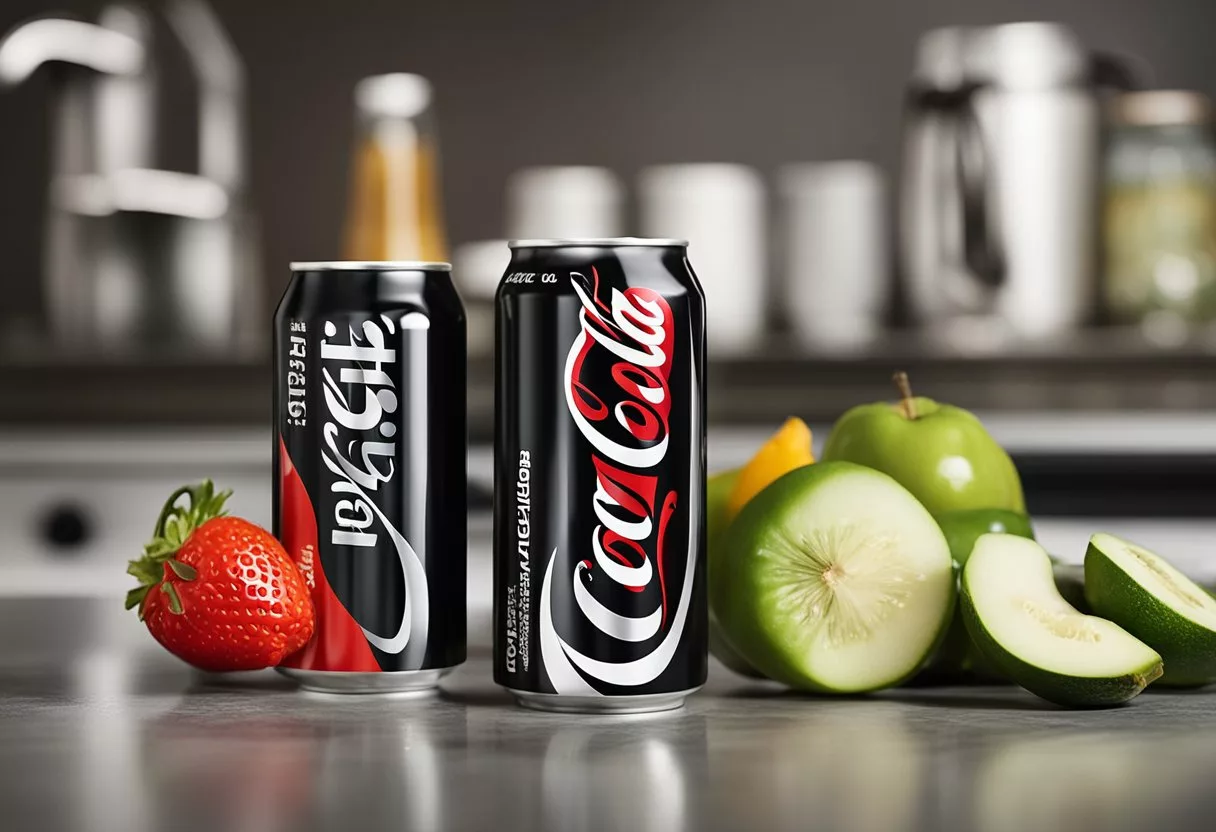
In assessing Diet Coke versus Coke Zero, it is crucial to evaluate their health implications, particularly regarding their artificial sweeteners, caffeine content, and overall recommendations from health experts.
Artificial Sweeteners and Health
Artificial sweeteners, specifically aspartame and acesulfame potassium, are central to the taste profile of both beverages. While these sweeteners are FDA-approved and can aid in reducing sugar intake, they have been subject to health concerns.
In moderation, they offer a sweet flavor without the calories, potentially benefiting weight management. However, individuals with phenylketonuria should avoid aspartame due to their inability to process phenylalanine. Some people report headaches as a reaction to these compounds, though research on the breadth of potential health issues remains ongoing.
Caffeine Content and Effects
Diet Coke contains about 46 milligrams of caffeine per 12-ounce can, whereas Coke Zero has approximately 34 milligrams.
Caffeine, a stimulant, has discernible effects on alertness and can contribute to caffeine-related health issues if consumed in excess. It is advisable for individuals sensitive to caffeine or those with specific health reasons, such as heart conditions or anxiety disorders, to limit their intake.
Health Impact Recommendations
Experts recommend consuming both Diet Coke and Coke Zero in moderation. Though these drinks are calorie-free and can assist in weight control as part of an overall diet, their impact on long-term health, such as potential links to obesity or diabetes, warrants caution.
The key is balance; these beverages can be a part of a healthy diet when consumed responsibly, but they should not be the sole source of hydration nor a substitute for nutrient-rich drinks.
Consumer Preferences
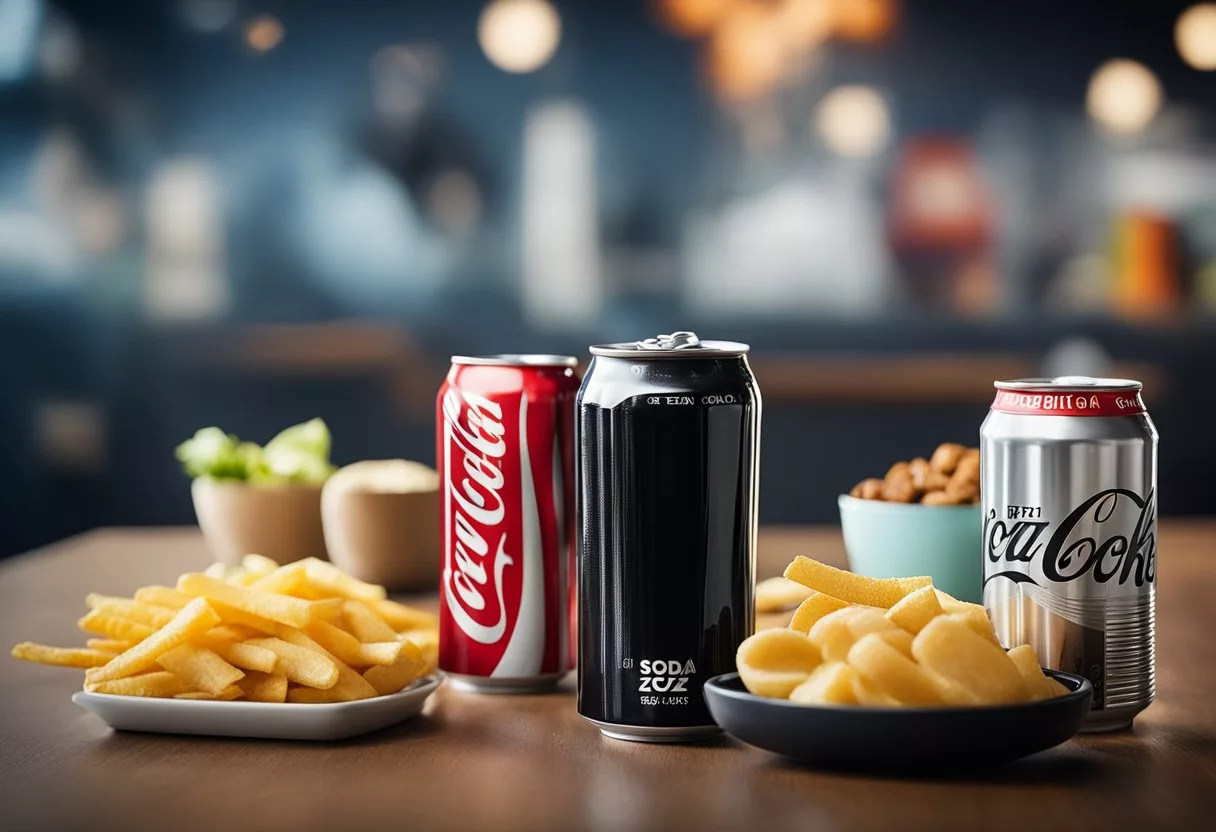
Consumer choices between Diet Coke and Coke Zero often hinge on individual taste preference factors and health and diet influences, with both products offering a calorie-free alternative to regular soft drinks.
Taste Preference Factors
Taste is a primary determinant in whether consumers opt for Diet Coke or Coke Zero.
Some argue that Diet Coke has a lighter and more refreshing flavor, while Coke Zero aims to emulate the traditional taste of Coca-Cola Classic, often resulting in a richer taste experience. Personal preference plays a significant role, as some individuals may prefer the taste of one over the other due to the variance in flavor profiles.
Health and Diet Influences
When it comes to health and diet, consumers frequently scrutinize the sweetener used in both drinks.
Diet Coke and Coke Zero use different combinations of low-calorie sweeteners, which can have varying effects on one’s desire to lose weight or manage blood sugar levels.
For instance, Coke Zero contains both potassium citrate and acesulfame potassium, differentiating it from Diet Coke, which includes citric acid. Individuals focused on health may choose one product over another based on these ingredient differences or caffeine content.
Beverage Alternatives

Choosing between different beverages often boils down to their ingredients and nutritional profiles. This section compares popular sodas, such as Diet Coke and Coke Zero, and assesses various healthier drink options.
Comparing Sodas and Soft Drinks
When comparing Diet Coke and Coke Zero, one finds that while they both are low-calorie alternatives to regular Coca-Cola, they differ in sweetener composition and flavor profiles.
Diet Coke contains artificial sweeteners like aspartame, giving it a distinct taste separate from Coca-Cola. On the other hand, Coke Zero intends to mimic the original Coca-Cola flavor using a different blend of artificial sweeteners.
In regards to soft drinks in general, they often contain artificial flavors and added sugar, which can contribute to health issues if consumed in excess.
Conversely, natural flavors, such as those derived from fruits, are sometimes added to soft drinks to enhance their taste without the added caloric content of sugar.
Exploring Healthier Options
For those looking for alternatives to traditional sodas, there are various healthier options available:
- Sparkling Water: A hydrating choice, often with natural fruit essences and without added sugars.
- Kombucha: A fermented tea beverage that contains beneficial probiotics and may have a slight natural effervescence.
- Tea and Coffee: Naturally calorie-free options (without added sugars or creams), both drinks provide antioxidants with the added benefit of caffeine in various quantities.
When exploring drinks beyond sodas, it’s important to check labels for added sugars and consider if there are natural ingredients that provide not only flavor but also health benefits.
Marketing and Public Perception
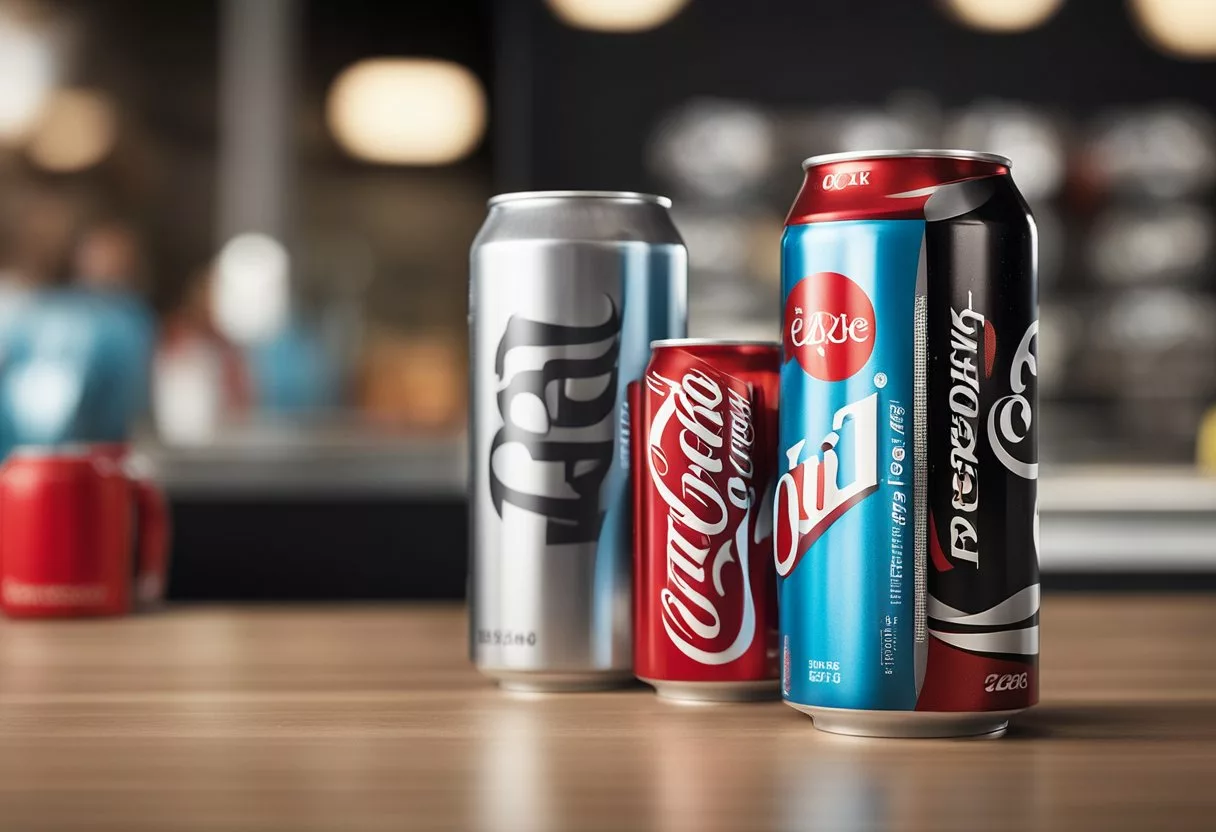
In the competitive landscape of low-calorie sodas, Diet Coke and Coke Zero have carved out distinct identities through targeted marketing campaigns and unique brand positioning. Both brands leverage the powerful Coca-Cola name yet cater to different demographics and taste preferences.
Advertising Strategies
Coca-Cola employs different advertising strategies for Diet Coke and Coke Zero (now Coca-Cola Zero Sugar), each resonating with its intended audience.
Diet Coke, introduced in 1982, has traditionally marketed to a female demographic with an emphasis on style and individuality. Advertisements often feature fashion-forward imagery and messaging that aligns with empowerment and choice.
Coke Zero, which hit the market in 2005, pivoted towards a predominantly male audience, promoting a “bold” and “real” Coca-Cola taste without the calories. This brand was rebranded as Coca-Cola Zero Sugar to emphasize its taste similarity to the original Coca-Cola, a strategic move to attract consumers seeking the classic flavor with fewer health implications.
Consumer Reception
Consumer reception is a critical factor that shapes the evolution of each product.
Diet Coke has maintained a loyal following due to its distinct flavor and successful appeal to its target market with high ratings and recognition. The modernized brand image also contributes to its ongoing popularity, especially amongst a demographic valuing lifestyle branding.
Meanwhile, Coke Zero gained its own set of loyal customers who preferred its closer taste to regular Coca-Cola. The public’s response to the rebranding to Coca-Cola Zero Sugar has been mixed; however, it has generally been positive as reflected in the consistent growth of the product line.
Labels and packaging play a significant role in these perceptions, with both brands undergoing design refreshes to maintain relevance and appeal in a crowded market. The One Brand strategy implemented since 2015 aimed to present a more unified approach to the Coca-Cola, Diet Coke, and Coca-Cola Zero Sugar brands, as evidenced by a packaging revamp intended to align them more closely with each other.
Frequently Asked Questions
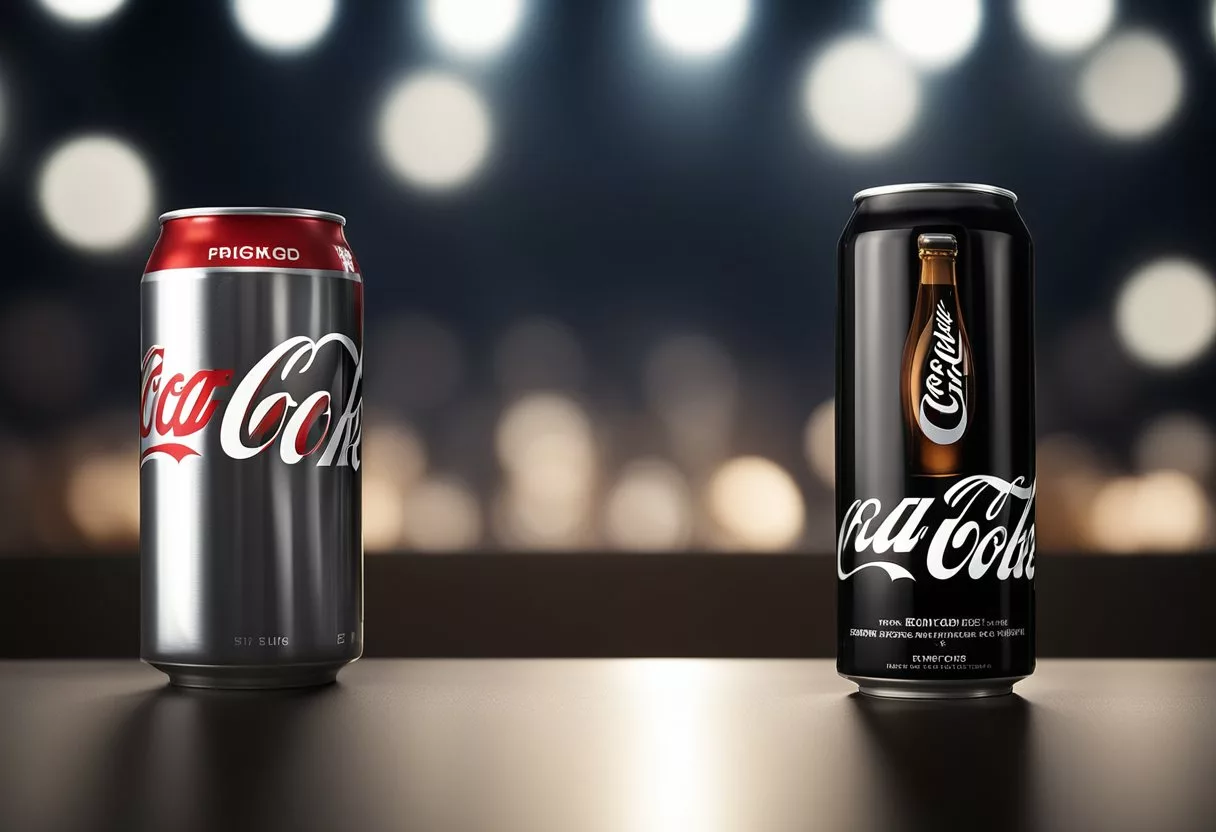
In comparing Diet Coke and Coke Zero, consumers often inquire about differences in taste, calorie content, caffeine levels, sweetener types, suitability for diabetics, and whether these beverages are keto-friendly.
What are the differences in taste between Diet Coke and Coke Zero?
Diet Coke presents a lighter taste profile, while Coke Zero is designed to more closely mimic the classic Coca-Cola flavor. The distinction owes to variations in their specific flavoring formulas.
Which has fewer calories, Diet Coke or Coke Zero?
Both Diet Coke and Coke Zero are marketed as zero-calorie beverages. They each contain negligible energy and are therefore considered to have equivalent caloric content.
Is there a difference in caffeine content between Diet Coke and Coke Zero?
There’s a slight discrepancy; Diet Coke contains a bit more caffeine than Coke Zero, impacting the stimuli effect on consumers who are sensitive to caffeine variations.
What sweeteners are used in Coke Zero compared to Diet Coke?
Coke Zero utilizes a blend of aspartame and acesulfame potassium. Diet Coke primarily uses aspartame, differentiating the sweetening profiles of these two sodas.
Are Diet Coke and Coke Zero suitable for diabetics, and how do they differ?
Both drinks do not contain sugar and have a minimal impact on blood glucose levels, making them suitable for diabetics. However, individual reactions to artificial sweeteners may vary.
Can Coke Zero be considered keto-friendly?
Coke Zero contains no carbohydrates or calories. It can generally be considered keto-friendly, fitting within the dietary constraints of the ketogenic diet which limits carbohydrate intake.